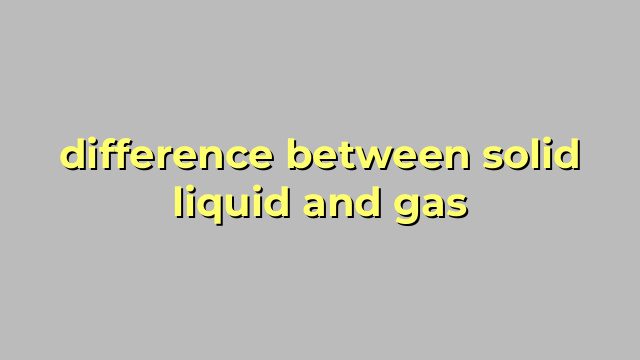Understanding the Difference Between Solid, Liquid, and Gas
When it comes to matter, there are three states that it can exist in- solids, liquids, and gases. Each of these states has unique properties that differentiate it from the others. Understanding these differences is essential not just for scientific research but for optimizing industrial processes and everyday life. Here’s a rundown of what sets solids, liquids, and gases apart:
Solids
Solids are substances that have a definite shape and volume. This means that they retain their shape even when placed in a container. The particles that make up solids are tightly packed together, and they vibrate in place but do not move around freely. This accounts for their rigidity and resistance to deformation. Some other characteristics of solids include:
– High density
– Low compressibility
– Definite melting and boiling points
Examples of solids include rocks, metals, and ice.
Liquids
Liquids, on the other hand, have a definite volume but no fixed shape. They take the shape of the container they are in and flow freely. The molecules that make up liquids are more loosely packed and have more kinetic energy than those in solids. This allows them to move around each other, causing the fluidity of liquids. Some properties of liquids include:
– Lower density compared to solids
– High compressibility
– Different boiling points depending on pressure
Examples of liquids include water, oil, and alcohol.
Gases
Unlike solids and liquids, gases have no definite shape or volume. They expand to fill any container they are in and are highly compressible. The molecules in gases move around freely, colliding with each other and the walls of the container. This kinetic energy results in the high energy levels of gases. Some properties of gases include:
– Low density compared to solids and liquids
– High compressibility
– No fixed boiling and melting points
Examples of gases include air, helium, and nitrogen.
In conclusion, solids, liquids, and gases differ in their molecular arrangement, density, compressibility, and boiling points. By knowing these differences, we can better understand the behavior of substances in different conditions and optimize their applications in various industries.
Table difference between solid liquid and gas
| State of Matter | Shape | Volume | Particle Arrangement | Particle Movement |
|---|---|---|---|---|
| Solid | Definite | Definite | Tightly packed | Vibrational |
| Liquid | Indefinite | Definite | Close together but can move around | Random |
| Gas | Indefinite | Indefinite | Far apart and can move freely | Random and rapid |
